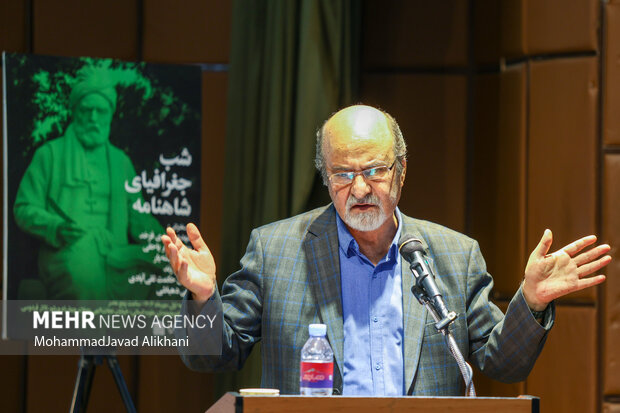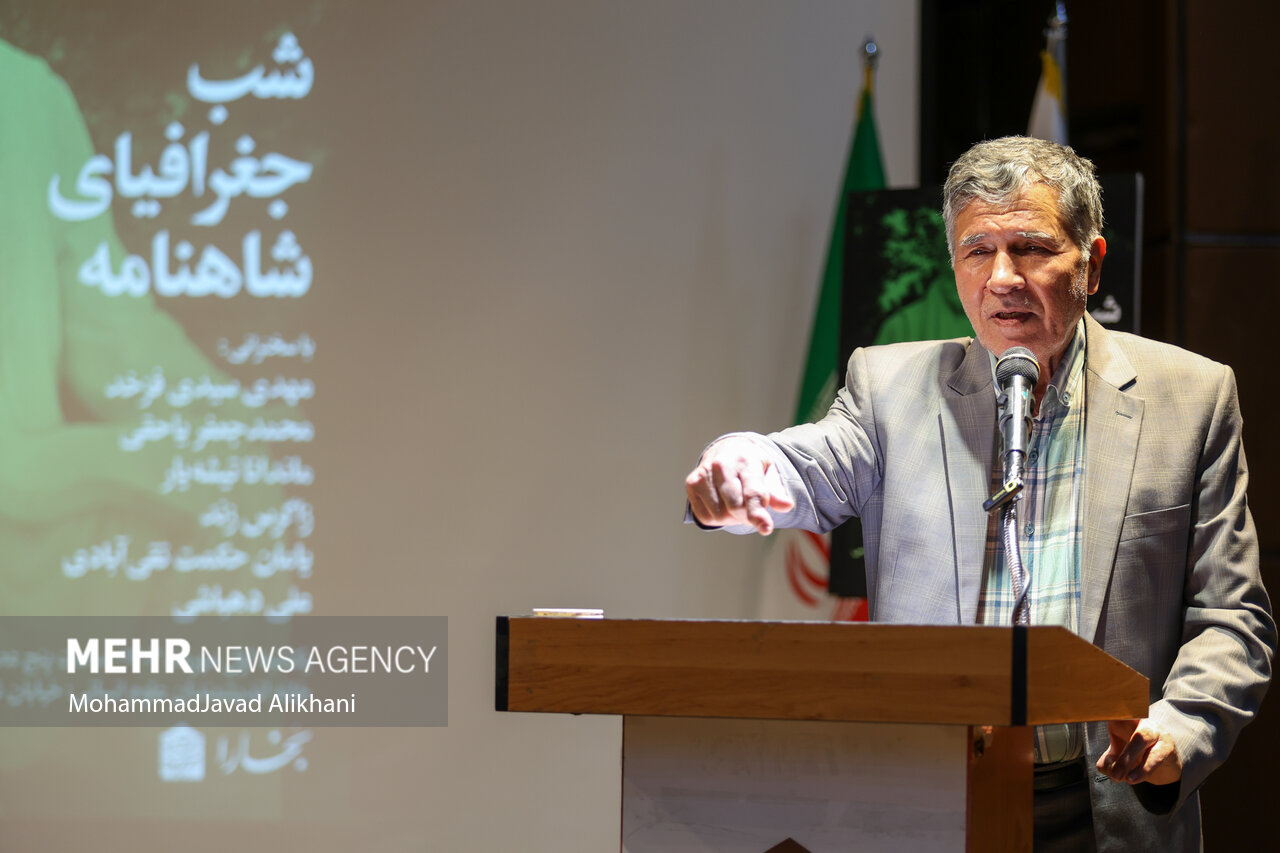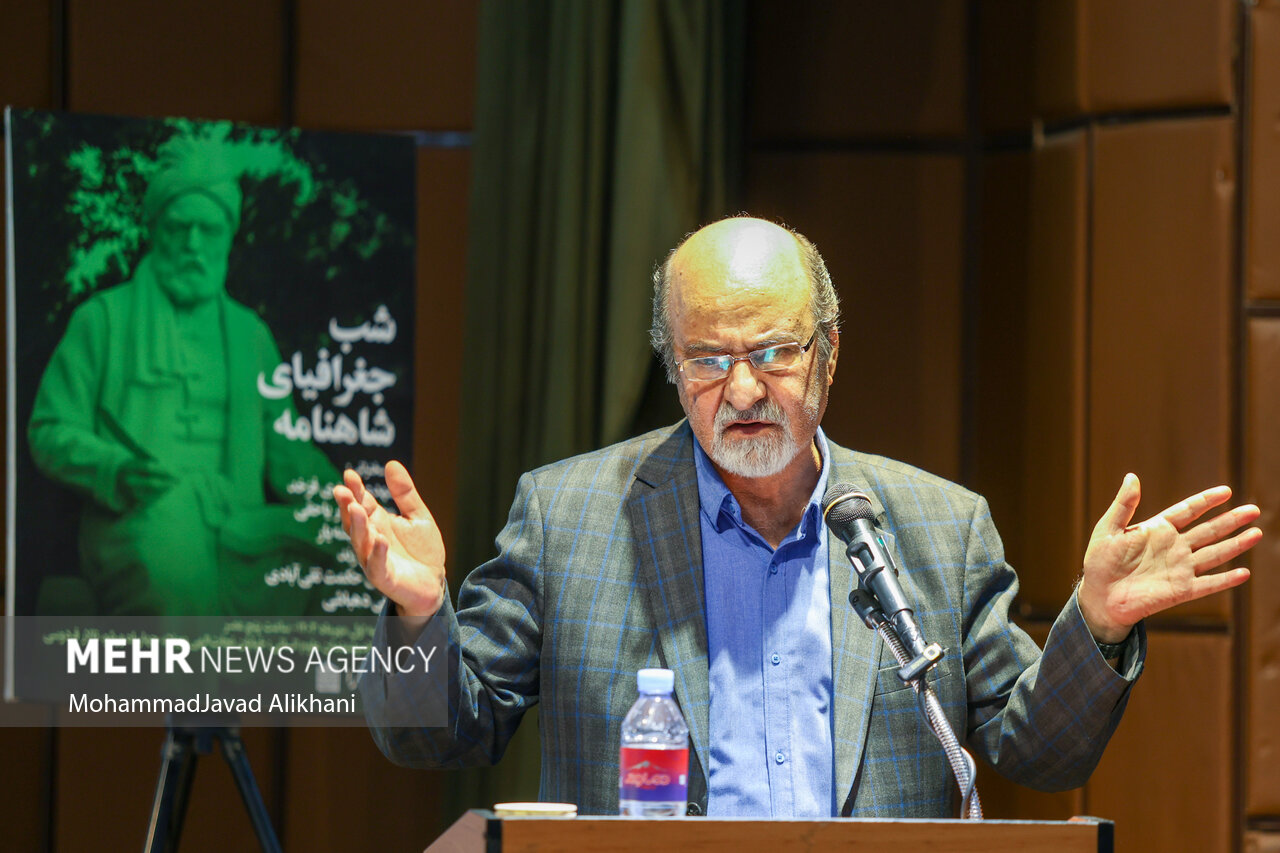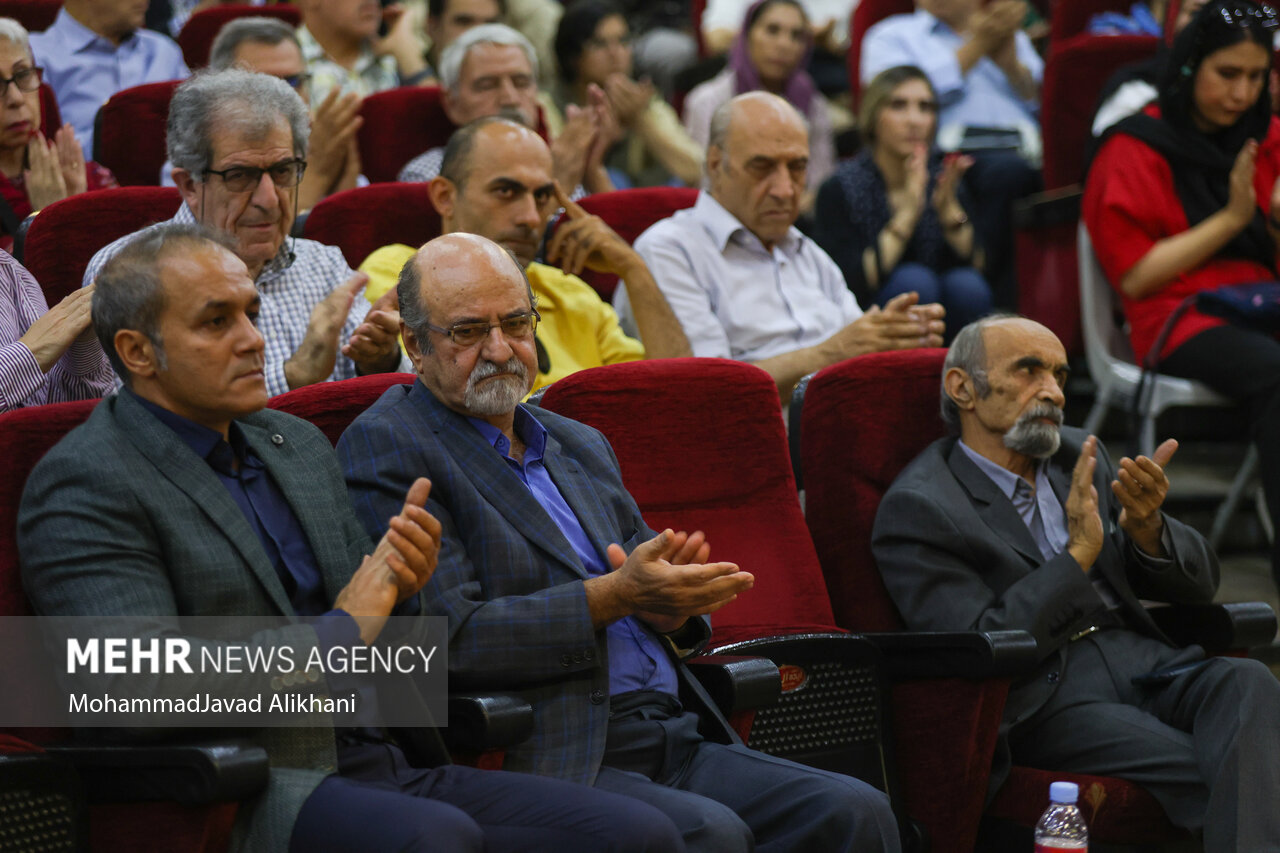The name of Iran is mentioned for the first time in the Shahnameh

According to mehr reporter, The Shahnameh geography night meeting was held by Bukhara magazine on Sunday evening, the first of Mehr in the Ferdowsi Hall of the House of Humanities Thinkers. The speakers of the 767th night of Bukhara were Mehdi Sidi Farkhed, Jafar Yahaghi, Mandana Tisheyar, Zagros Zand and Yaman Hekmat Taghiabadi.
The meeting started with the words of Ali Dehbashi and explaining the topic of the meeting and the course of the discussion, he pointed out that this program will be held at the same time as the reprinting of the book “Historical Geography of Shahnameh”.
The first speaker was Jafar Yahaghi, a researcher in the field of literature, who spoke about the historical geography of the Shahnameh and its author – Mehdi Sidi Farrokhd and his expertise in this field – and referring to the history of cooperation with him in the field of correcting Bayhaghi’s history and common geographical locations. With the Shahnameh, he proposed a plan to collect the sources of the Shahnameh and added that the cooperation of Afghan and Tajik students can be used to implement this plan.
He also pointed out the deep-rooted and cultural nature and influence of mythology in cultures and spoke about the desire of the people of each region to be closer to the places mentioned in mythology and the Shahnameh, and in this regard to Kurdistan and the nomads of Lorestan and other regions. Eastern Iran and Afghanistan pointed out.
Where is Iran and Aniran in Shahnameh?
Mehdi Sidi, the author of the book “Historical Geography of Shahnameh” was the next speaker and said: Just as Fars, Damavand, Leborz and Sistan, etc. have objective reality in the outside world, other places can be found by researching and searching.
He then pointed to the process of the emergence and tracing of the names of geographical places in the Shahnameh and added: In the Pishdadian period, there is no name of geographical places in the Shahnameh, and “Iran” is mentioned for the first time in the period of the Jamshid kingdom and then Dhahak; Also, Alborz is mentioned as the first geographical location and “Damavand” as the place where Dahhak was imprisoned. He also mentioned “Amel”, which was the capital of Fereydun, and called it the Umm al-Qara of Tabaristan.
This researcher said about the civilization region of Iran: According to Abu Mansouri’s Shahnameh, we were dealing with two regions, Iran and Aniran (Nairan). He also showed the borders of Iran and Turkestan in detail on the map and considered the estimate of Russian researchers to be incorrect in naming Turkestan. Describing the border between Iran and Turan, he said: The sign of this border is the existence of civilization and urbanization. Within the borders of Iran, there are large and prosperous cities, the cultural borders of urbanization and civility are the vital element that draws a border between Iran and Iran.
He also announced the writing of a book to complete the historical geography book of Shahnameh.
Regionalism in international relations and Shahnameh geography
Mandana Tishehyar, a researcher of international relations, explained about the issue of regionalism in international relations and its connection with the geography of the Shahnameh, especially in the Caucasus region: The Shahnameh can be a kind of identity document to communicate with the regions that share the Shahnameh area. ; In this regard, it is possible to discuss and interact with other common countries on this subject due to its geography.
He explained about the idea of regionalism and its characteristics, he also mentioned about the Caucasus region: Azerbaijan, Armenia, South-West Russia, Georgia and a part of Iran, as well as the Qaf Mountain, the Caspian Sea and the Chichest Sea (Urmia). ; He also mentioned ten important historical-literary figures in the Shahnameh who originated from that region.
Time and place in Shahnameh
Zagros Zand, a researcher of ancient Iran, spoke about the axis of the Sasanians in the Shahnameh and stated: The more the geography of the Shahnameh is studied, the more its historical value increases, because these two are in sync with each other, and these studies prove that Shahnameh is a historical, accurate and earthy text.
He added: “The Shahnameh is not fictional and it is relevant as much as it is timely.” In the following, he explained about the retreat route of Yazgerd III during the Arab attack in various sources and stated his exact retreat route through Ray, Gorgan, Neishabur, Pusht and Merv.
Adding the historical geography of Shahnameh to humanities courses in universities
Yaman Hekmat Taghiabadi was the last speaker of this book, who explained to what extent attention to historical, cultural and literary geography can influence our understanding of texts. Stating that the way to save literature groups is to connect with other disciplines and start interdisciplinary research based on literary geography, he said: reading the Shahnameh is important for identity and its pursuit in civilizational geography is also important for diplomatic institutions in order to communicate with countries. Common in this field, both students and professors are useful at the university level.
Taghiabadi also said at the end: In universities, especially in the fields of international relations, management and law, a chapter should be prepared on this topic, students in Tehran, Kabul, Dushanbe and other countries of this cultural field can work together on this topic. take a step together because this companionship causes more and more interaction and connection.





